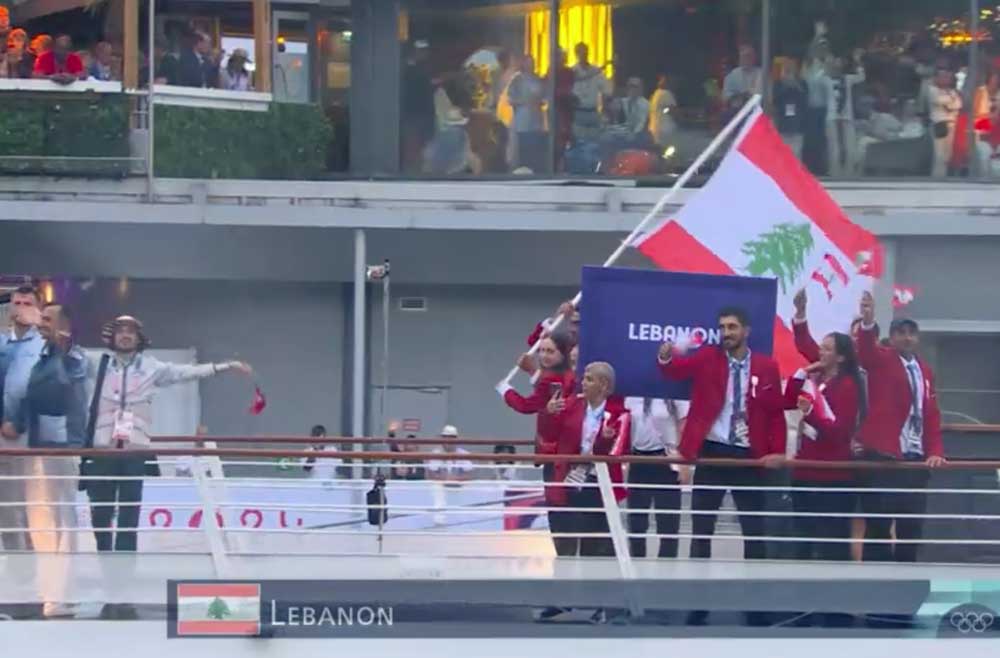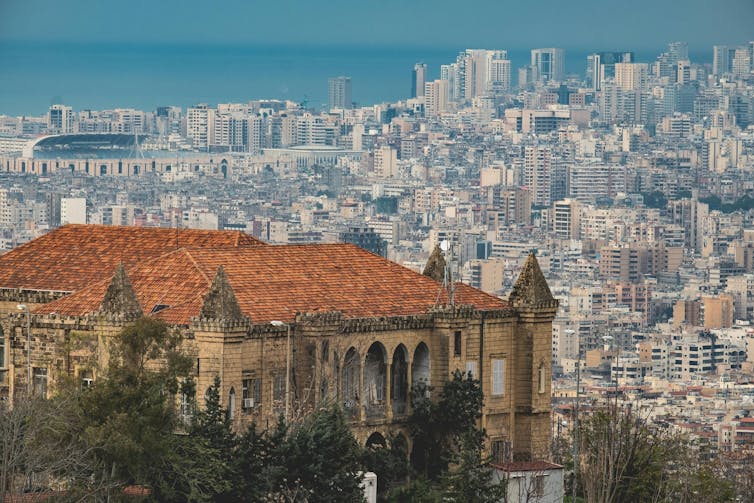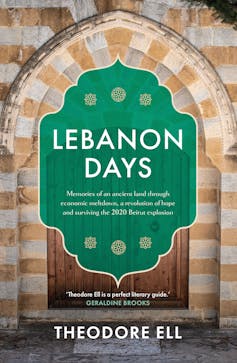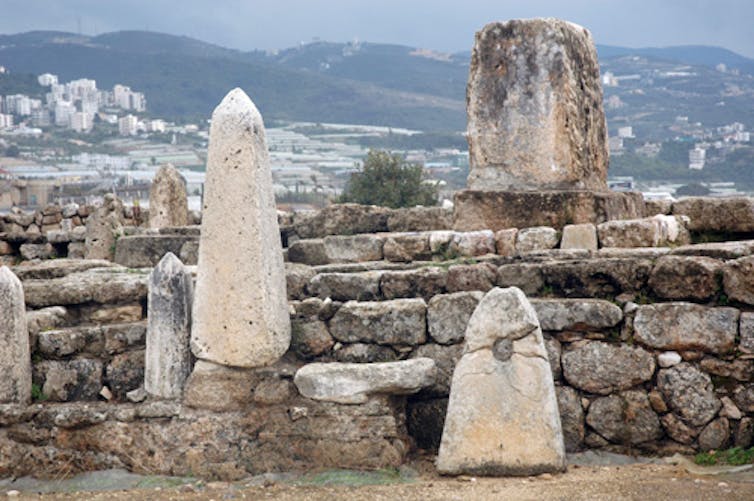
By Ian Parmeter
I first visited Lebanon in 1978, three years into the civil war and six years before Theodore Ell was born. I mention this because, despite the fact our experiences of this fascinating country were at different times, his impressions and judgements in his excellent new book Lebanon Days – which spans the tumultuous period from 2018 to 2021 – accord very much with my own.
At the time of my first visit, I was studying Arabic in Cairo at the behest of the Australian Department of Foreign Affairs. DFA (no “T” on the acronym in those days) was seeking to increase its Middle East expertise in the wake of the massive rise in oil prices engineered by Gulf oil producers following the 1973 Arab–Israeli war.
My department had approved the trip to enable me to broaden my knowledge of the Middle East and to practise Arabic in different environments where that devilishly difficult language is spoken. This was travel on the cheap through Lebanon, Syria and Jordan over three weeks – using “service” taxis (taxis with several passengers) and staying in hotels that would struggle to earn a half-star rating.
The point was to have full immersion in environments where little or no English was spoken, and I would have to make myself understood in Arabic for all the practicalities of daily life.
Book Review: Lebanon Days by Theodore Ell (Atlantic)
Beirut: a city divided
Before flying to Beirut, I consulted books on the region in the Cairo embassy’s library. Those on Lebanon predated the civil war: I was struck by the beauty of Beirut’s centre, particularly Martyrs’ Square (which features several times in Ell’s book), with large palm trees on its eastern and western sides.
At Beirut airport, just south of the city, I hailed a taxi and asked the driver in “fus’ha” (formal) Arabic to take me to Martyrs’ Square. He looked at me in surprise – I assumed because my Arabic was not the “aarmi” (colloquial) dialect he was used to. But there was another reason. When we arrived at the square, all the palm trees had been shorn off about a metre from the ground, by high-velocity bullets.
I had stumbled onto the “green line” dividing Beirut’s east and west, the main fighting arena of the war. The taxi driver was clearly nervous about being near the square and, as a Muslim, would not take me into the Christian east.
In subsequent years, I visited Beirut several times during the war. I worked there for three years in the late 1990s, when the country seemed for a few years to be getting back on its feet.

Jo Kassis/Pexels
While posted in Damascus, capital of Syria, in the mid-1980s, I periodically went to Beirut with another staff member to carry out various official tasks during breaks in the fighting. If we stayed in West Beirut, we usually slept in the then-closed embassy building. As a precaution we used to drag mattresses from bedrooms into the internal hallway, to minimise the risk of being peppered with shattered glass if an explosion happened near the building.
Another vivid memory of that time is being invited by a Lebanese businessman to lunch in one of Beirut’s finest restaurants. The food was French and the interior décor was what one might expect in an upscale European restaurant. The only detraction from a delightful dining experience was that the restaurant windows were covered with sandbags.
The 2019 revolution
The Taif Accord of October 1989 is generally seen as the formal end of the war. But even then, René Moawad, Lebanon’s first postwar president, served for only 18 days before unknown assailants assassinated him on 22 November that year.
Rafiq Hariri, prime minister for six years during the 1990s, invested much of his own personal fortune in the postwar reconstruction of Beirut. During that time, he invited other businessmen to pay a voluntary tax of 10% of their income to the state to assist with financing the reconstruction.
I recall a business acquaintance telling me he regarded this request as a joke – no one would pay such a tax. I asked how he expected the state to finance schools, hospitals and roads without taxes. He responded that in Australia I could reasonably assume my tax payments would go to these purposes. In Lebanon, such payments would end up in Swiss banks.

In Lebanon Days, Ell recounts many such stories, based on his experiences accompanying his wife, Caitlin, an Australian diplomat on a posting at our embassy in Beirut.
His time there included the economic devastation caused by the collapse in the value of the Lebanese pound. The Lebanese Central Bank had kept the value of the pound artificially high at 1,507.5 to the US dollar from 1999 to 2019. This distorted the economy by making imports artificially cheap and exports expensive, hampering development of export industries and causing unsustainable deficits to accumulate.
The policy depended on the Central Bank being able to obtain dollars more cheaply than it sold them, in order to maintain the pound’s value. It was a confidence trick doomed to eventual failure, which happened in October 2019. The result was social meltdown – thowra or revolution, involving riots over months. People from all of Lebanon’s 18 religious sects were affected equally, and protesters of all faiths gathered in Martyrs’ Square to shout slogans and sing protest songs. According to Ell, one such slogan described Lebanon as “a nation of sheep, run by wolves, owned by pigs”.
Then, in early 2020, Covid struck the country: Ell and Caitlin included. But that did not stop the revolution, which finally culminated in another disaster waiting to happen – the horrific explosion in Beirut’s port in August 2020, from negligent storing of a vast quantity of ammonium nitrate.
Ell won the 2021 Calibre Essay Prize for his essay published in Australian Book Review, in which he described the explosion and its impact on residents of the city in vivid detail. He expands on that detail in his book. I was particularly impressed with his comment that the ammonium nitrate had not been moved to safer storage because no one had worked out how to make money from it.
Ell’s book exudes reality to anyone who has lived in Lebanon. He describes vividly the Lebanese sense of fun, the nightclubs in East Beirut where patrons could drink and dance till dawn – and had done even in the depths of the civil war.
The flip side was the determination of Lebanese people to maintain appearances as the economy collapsed around them. Those who had frequented chic shopping malls but no longer had money for anything more than basic essentials would continue to walk the aisles of the malls – buying nothing, but carrying a luxury brand shopping bag to suggest that they had.
The war that did not end
Early in Lebanon Days, Ell makes the valid point that the civil war did not end: it simply became invisible. As he describes it, “Lebanon’s religious differences refined alienation into a way of life”.
Particularly telling is his account of Genevieve, a Maronite Christian woman, who “told us, in all candour, as though it were obvious things could be no other way, that she had never met a Muslim”. Genevieve “spoke as though the number of Muslims in her country – in her entire region of the world – was not a reality of history, an intrinsic part of life, but something offensive and noxious to be resisted”.
To make the Taif Agreement work, a national unity government was formed in the early 1990s, comprising the various sectarian leaders who had prosecuted the war. The main hold-out from this arrangement was Samir Geagea, the leader of the Lebanese Forces, a Christian militia. Geagea objected to continuing Syrian influence in the country’s governance. In 1994, he was arrested and jailed for crimes allegedly committed during the war. No such charges were laid against other ministers, who could have been accused of similar crimes.
I recall the US Ambassador in 1997 invited a group of Lebanese politicians and some Western ambassadors to his residence to brief a US congressional delegation on these postwar arrangements.
A congressman asked if the Lebanese had held a “truth and reconciliation commission” after the war, in the way South Africa had after the abolition of apartheid. One of the guests was the mercurial Druze leader, Walid Jumblatt, at the time a minister. He immediately responded, “No, we were more sophisticated in Lebanon. We put all the war criminals in the Cabinet, and any war criminal who refused to become a minister was put in jail.” Amid the laughter, the US ambassador explained to the bemused delegation that was pretty much what had happened.
Conspiracy theories
Ell constructs his narrative chronologically, but with a preface that explains how Lebanon became the country it is.
He describes the remarkable stelae (standing stone slabs used in the ancient world as markers) on the rock face near the Dog River, just north of Beirut. Each stela records an invader – from Ramses II of Egypt through to the Romans, the Ottomans, the French under Napoleon III and a contingent of the Australian Imperial Force, whose plaque records their campaign against Vichy French forces in Lebanon in 1941.
He describes the conspiracy theories espoused by Lebanese as a result of the constant threat of Israeli military action. That has usually followed attacks on Israel by Hezbollah, the Shia militia better armed than the Lebanese Army, over which the government has no authority. Sonic booms from Israeli aircraft breaking the sound barrier over Beirut cause instinctive searches for places to shelter.

Doris Pemler/Flickr, CC BY-NC
Ell concludes the book with a sad account of his and Caitlin’s departure. They had made many Lebanese friends, but many of them were leaving as well. The only ones reasonably happy to remain had dual citizenship, which gave them a foreign bolthole in the event of another disaster.
The book is well presented. It includes a map showing places mentioned in the narrative, a useful historical timeline, a glossary of Arabic terms and a guide to further reading.
Lebanon Days is a meditation on a country that never leaves its visitors unaffected. Ell is a gifted writer: his prose is unaffected, precise and elegant. He has taken the drama of his three years in Lebanon to illuminate this fascinating country’s past – and to point to a future that for now looks bleak, particularly with the ever-present threat of war between Israel and Hezbollah. But what emerges as well is the resilience of the people. This paradoxical country has made survival an art form.
![]()
Ian Parmeter is a Research Scholar at the Centre for Arab and Islamic Studies, Australian National University.




























Leave a Reply